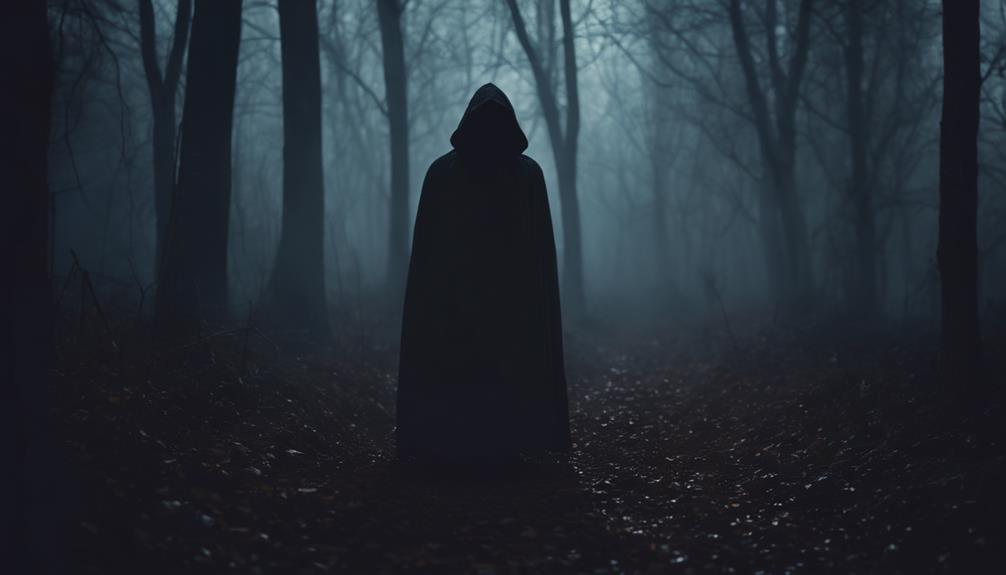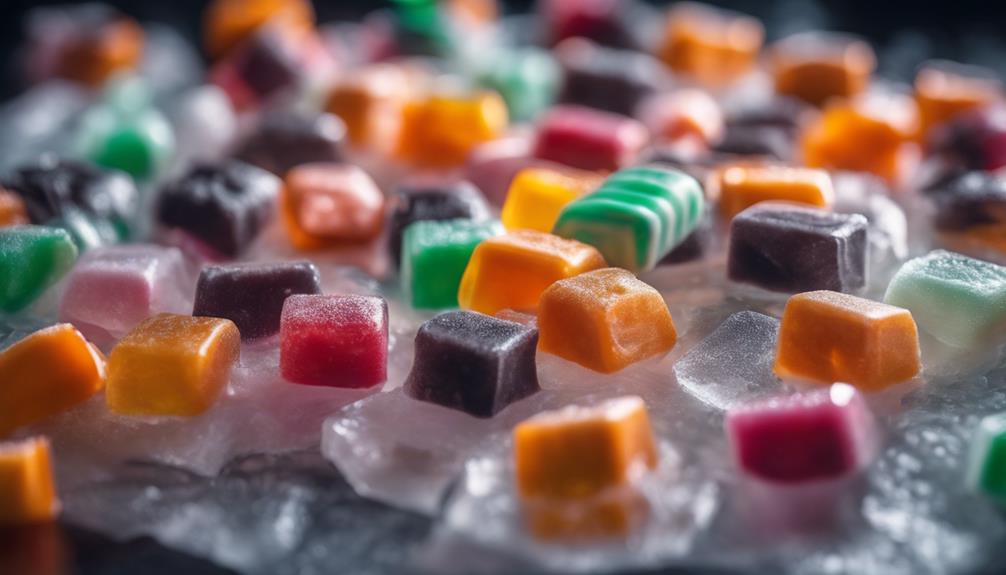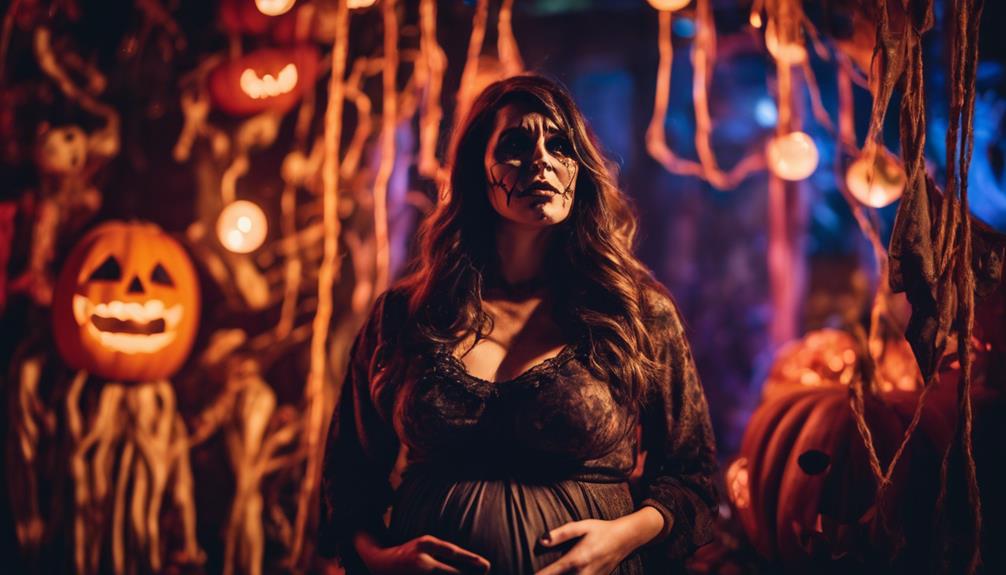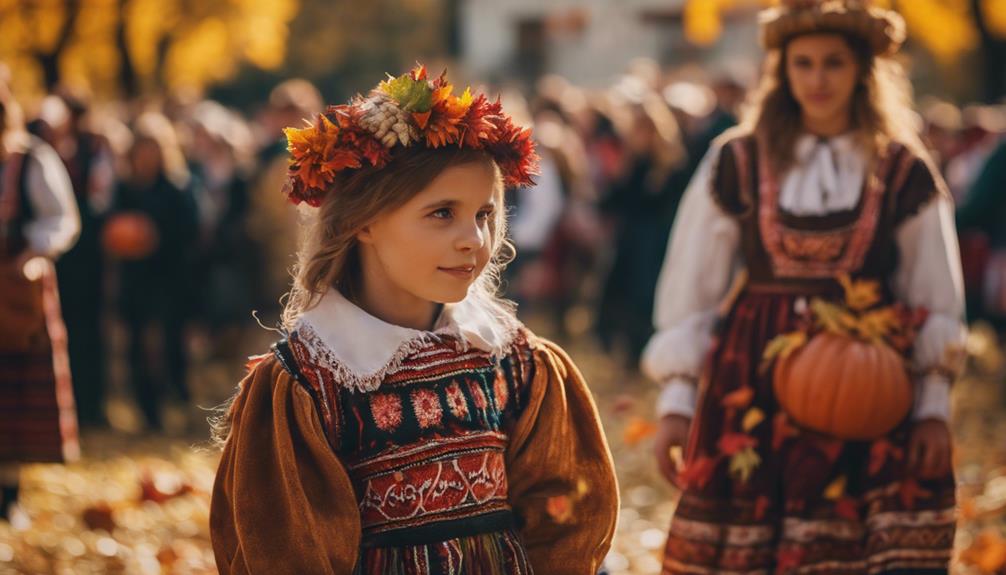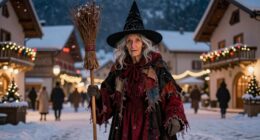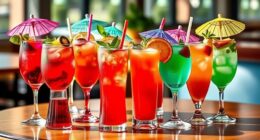Step into the eerie domain where ancient Celtic beliefs, psychological fear elements, iconic Halloween symbols, the role of darkness, jump scares, cultural influences, and the evolution of the horror genre converge to create a bone-chilling tapestry of fright in Halloween, unraveling what truly makes this holiday terrifying. From origins rooted in Samhain to the modern-day portrayal in horror media, the blend of history, psychology, symbols, and supernatural influences crafts an atmosphere of dread and suspense. The interplay of these elements taps into your deepest fears, ensuring Halloween remains a night of spine-tingling thrills.
Key Takeaways
- Emphasis on fear of the unknown and primal instincts.
- Utilization of darkness, isolation, and supernatural elements.
- Iconic symbols like jack-o-lanterns and black cats enhance fear.
- Psychological tactics like jump scares trigger immediate fright.
- Cultural and supernatural influences intensify Halloween's scare factor.
Origins of Halloween
The ancient origins of Halloween can be traced back to the Celtic festival of Samhain, signifying a notable shift between seasons. The Celts believed that on October 31, the boundary between the living and the dead blurred, allowing spirits to roam freely among the living. This festival marked the end of summer and the beginning of a new year for the Celts. Over time, as Christianity spread, All-Hallows Eve, a church-sanctioned holiday, replaced the Celtic festival of the dead. The name 'Halloween' itself is derived from this historical shift.
As Halloween evolved, it blended various cultural traditions and practices, transforming from ancient rituals to the widely celebrated holiday we understand today. The origins of Halloween are deeply rooted in the belief that during this time of the year, the veil between the living and the spirit world is at its thinnest, allowing for a connection between the two worlds.
Psychological Fear Elements
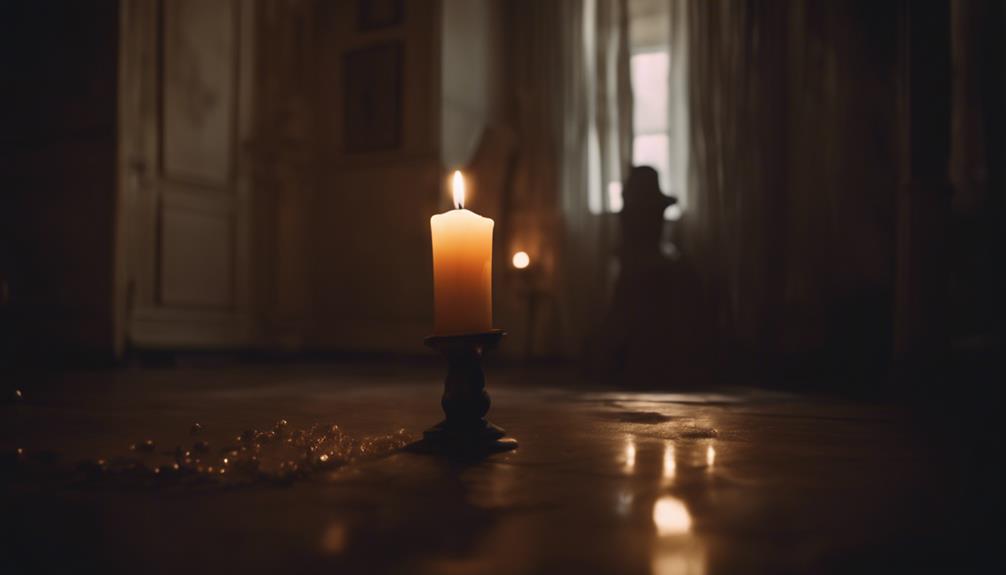
Psychological fear elements in Halloween capitalize on your fear of the unknown, playing mind games with your anticipation of danger and toying with the uncanny valley effect. Jump scares, suspenseful build-ups, and psychological manipulation through lighting and sound will keep you on edge during Halloween.
Themes of death, isolation, and the supernatural tap into primal fears, triggering your fight-or-flight responses and leaving a lasting impression of dread.
Fear of the Unknown
Embracing the mysterious and uncertain aspects of Halloween adds a thrilling dimension to the spooky festivities. Halloween's essence of horror thrives on the fear of the unknown, plunging you into a world of uncertainty and darkness. The night becomes alive with shadows that play tricks on your mind, intensifying the spooky atmosphere. As you navigate through Halloween events, the element of surprise keeps you on edge, never knowing what may lurk behind the next corner. The obscured identities and hidden intentions of eerie characters further amplify the fear-inducing nature of the unknown during this holiday.
The psychological fear of the unknown triggers primal instincts within you, igniting feelings of fight or flight. Your senses become heightened, and every creak or whisper in the night sends shivers down your spine. The uncertainty of Halloween taps into deep-seated fears of unpredictability, making the experience both thrilling and chilling. Let the mystery of Halloween ignite your primal instincts and enhance the spookiness of the season.
Mind Games and Illusions
Exploring through Halloween events, your mind is manipulated by intricate mind games and illusions designed to exploit your deepest fears and anxieties. Halloween capitalizes on psychological fear elements, using subtle cues like eerie music and unsettling visuals to create a pervasive sense of unease and tension. By playing on human vulnerabilities, this holiday triggers primal instincts, making you susceptible to the psychological tricks at play. Mind games and illusions in Halloween thrive on suspense, anticipation, and the unknown, heightening the fear factor by keeping you on edge.
These tactics aim to engage your imagination and tap into deep-seated fears, culminating in a truly frightening experience. The combination of psychological manipulation and immersive environments can elicit intense emotional responses, showcasing the power of Halloween to evoke a visceral reaction. By delving into the world of mind games and illusions, Halloween pushes the boundaries of fear, offering a unique and thrilling experience that plays on the intricacies of human psychology.
Iconic Halloween Symbols
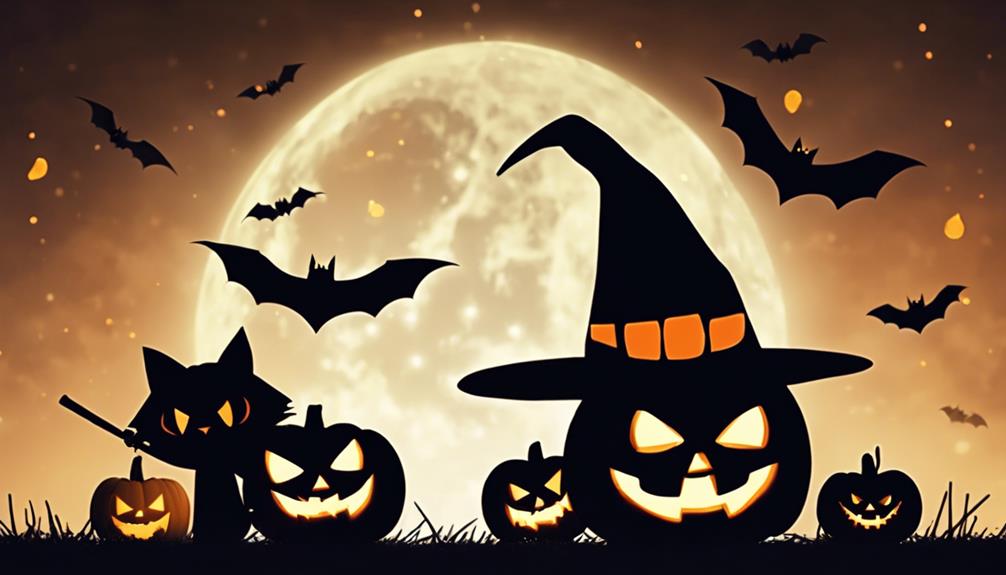
Carved from turnips in the past, jack-o-lanterns have evolved into iconic Halloween symbols now made from pumpkins. These glowing gourds light up doorsteps and haunted houses, adding a spooky ambiance to the night.
Black cats, with their association to witches and superstitions, prowl the streets on Halloween, their mysterious presence heightening the eerie atmosphere. The classic color scheme of orange and black dominates decorations, symbolizing the harvest season and the thin veil between the living and the dead.
Costumes play an essential role, allowing you to transform into anything from ghosts to superheroes, contributing to the overall sense of mystery and excitement. Superstitions, bonfires, and the tradition of warding off evil spirits are deeply rooted in Halloween customs, enhancing the thrill of the night.
Embrace these iconic symbols to fully immerse yourself in the chilling magic of Halloween.
Role of Darkness in Fear

Darkness envelops Halloween, shrouding the night in an ominous cloak that fuels primal fears and heightens anticipation. The shadows and lack of light play a vital role in creating fear during Halloween, triggering primal fears of the unknown and potential dangers, adding to the eerie atmosphere.
This element of darkness allows your imagination to run wild, filling the void with imagined terrors and suspense. Haunted attractions often capitalize on darkness to disorient and unsettle visitors, intensifying the scare factor and making you question what could be lurking in the shadows.
The fear of the unseen and unknown that comes with darkness during Halloween embodies a primal instinct, making it a key component of the spooky season. Embrace the darkness this Halloween, let it fuel your fears, and immerse yourself in the anticipation of what may be hiding just out of sight.
Impact of Jump Scares
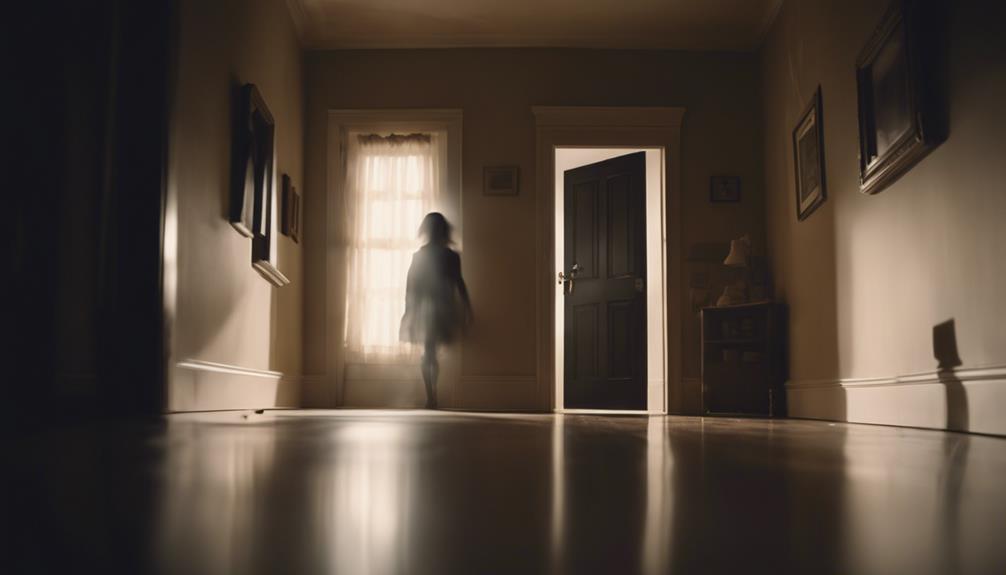
Utilizing sudden, intense stimuli to startle and provoke immediate fear, jump scares are a common technique employed in horror media. These quick frights are often accompanied by loud noises or sudden movements, triggering the fight-or-flight response in your brain. When experiencing a jump scare, your body releases adrenaline, heightening anxiety and intensifying the feeling of fear and suspense. Whether it's in horror movies, slasher films, or haunted houses, jump scares aim to create an instant rush of adrenaline, keeping you on edge and immersed in the moment. The element of surprise in jump scares can leave a lasting impact, enhancing the overall scare factor and making Halloween experiences more thrilling. However, an overreliance on jump scares can lead to predictability, diminishing their effectiveness over time.
| Halloween Costumes | Horror Movies | Slasher Films |
|---|---|---|
| Jump Scares | Haunted Houses | Adrenaline |
| Fear | Suspense |
Cultural Influence on Fear
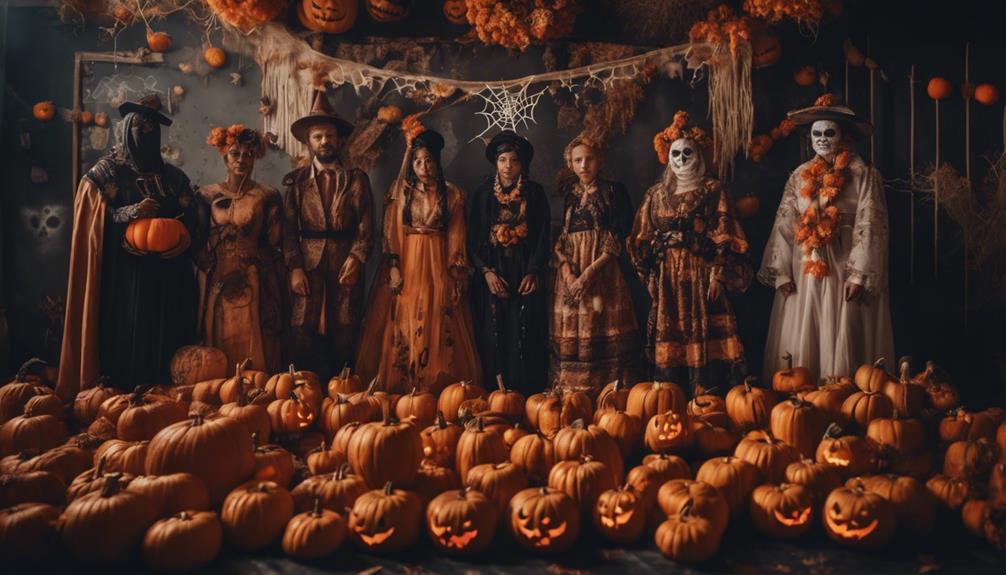
Cultural influences play a significant role in shaping the fear associated with Halloween. Symbols like black cats, witches, and ghosts stem from historical beliefs about the supernatural and the dead.
The entertainment industry further perpetuates these fears through movies and TV shows, contributing to the overall spooky atmosphere of the holiday.
Fear in Folklore
Influenced by centuries-old tales and beliefs, folklore weaves a tapestry of fears that continue to haunt Halloween celebrations. Explore the chilling depths of fear embedded in folklore:
- Supernatural Beings: From malevolent spirits to shape-shifting creatures, folklore introduces a myriad of otherworldly entities that send shivers down your spine.
- Monsters: Terrifying beasts lurk in the shadows of folklore, embodying our deepest fears and nightmares with their grotesque forms and insatiable hunger.
- Ghosts: Haunting specters from beyond the grave populate folklore, their ethereal presence evoking a sense of dread and foreboding.
- Myths: Ancient tales of gods, heroes, and monsters intertwine with folklore, offering a rich tapestry of mystical narratives that inspire both awe and fear.
- Legends: Legendary figures, both heroic and malevolent, populate folklore, their stories passed down through generations to instill a sense of wonder and fear.
These elements of folklore contribute to the rich tapestry of fear that makes Halloween a truly spine-chilling experience.
Media Portrayal Impact
Explore how modern media representations of Halloween amplify and shape our collective fears, influencing the holiday's eerie essence in contemporary culture. Media portrayal, including horror films such as 'Halloween' and 'Scream', plays a significant role in creating a scary image of Halloween. These movies depict iconic characters and scenarios that become ingrained in our minds, contributing to the overall spooky atmosphere of the season. Additionally, TV shows and social media platforms showcase trending Halloween themes, characters, and costumes, further shaping people's perceptions and experiences of fear during this time of year.
The entertainment industry not only entertains but also influences the way we perceive and celebrate Halloween. Popular characters like vampires, zombies, and witches, along with creepy decorations and costumes, become emblematic of the holiday's spooky traditions. By constantly reinforcing these images through various media channels, Halloween's scary reputation is solidified, captivating audiences and adding to the thrill and excitement of the season.
Evolution of Horror Genre

The horror genre has undergone significant evolution over the years, shaping the way modern audiences experience fear in films.
- Early silent films like 'Nosferatu' laid the foundation for modern horror storytelling.
- Classic horror films from the 1930s and 1940s introduced iconic monsters like Dracula and Frankenstein.
- The 1960s and 1970s shifted towards psychological horror with films like 'Psycho' and 'Rosemary's Baby.'
- The 1980s saw the rise of slasher films like 'Halloween' and 'Friday the 13th,' featuring masked killers and graphic violence.
- Contemporary horror films continue to push boundaries with innovative storytelling techniques and diverse themes of fear.
Each era in the evolution of horror has added new dimensions to the genre, from the chilling suspense of psychological horror to the visceral scares of slasher films. By building upon these foundations, filmmakers continue to captivate audiences with fresh takes on fear and terror, ensuring that the evolution of horror remains a dynamic and ever-changing landscape in the world of cinema.
Connection to Supernatural Beliefs
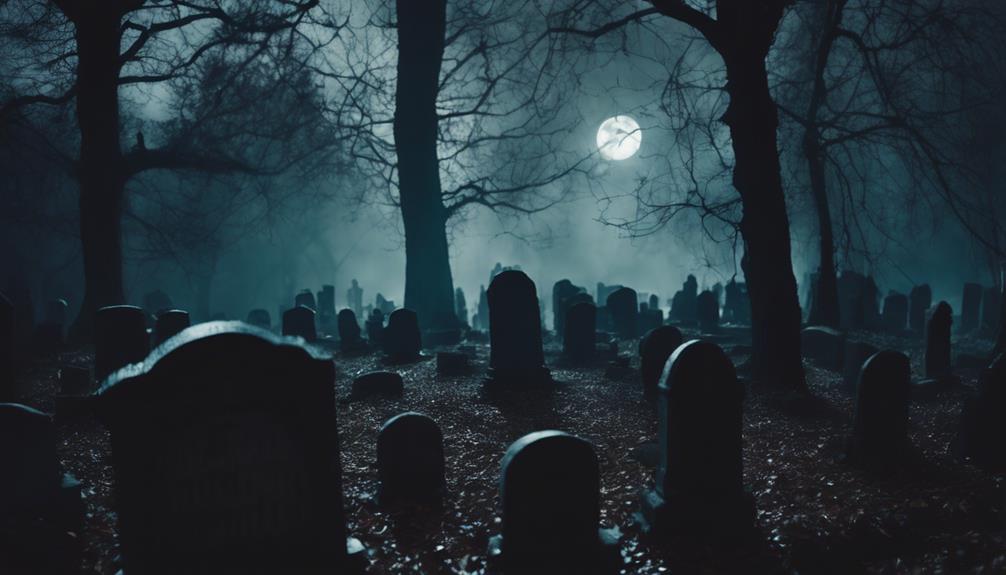
Exploring the supernatural origins of Halloween reveals the ancient Celtic beliefs that continue to influence the holiday's spooky traditions today. The Celts believed that on October 31, during Samhain, the boundary between the living and the dead blurred, allowing spirits to cross over into the living world. This belief in spirits crossing over added a scary element to Halloween, as people feared encountering supernatural entities during this time of heightened spiritual activity.
To protect themselves, the Celts engaged in rituals and offerings to appease the dead and ward off any malevolent spirits. The superstitions and rituals practiced during Halloween reflect a deep-rooted belief in the presence of supernatural beings. The idea that spirits could roam among the living added an eerie and unsettling atmosphere to the holiday, making it a time when the veil between the worlds felt thinnest, and the unknown seemed closer than ever.
Fear Through Visuals
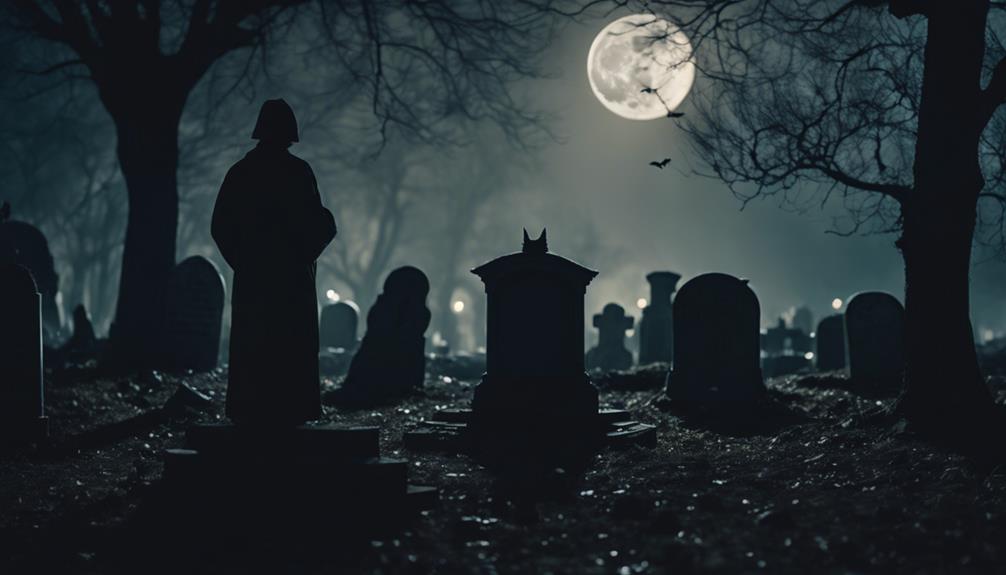
Dark, shadowy settings, eerie lighting, and creepy costumes combine to create a spine-chilling atmosphere during Halloween. When it comes to fear through visuals, there are several key elements that contribute to making this unsettling experience truly terrifying:
- Distorted or grotesque visuals, such as deformed faces, blood, and gore, contribute to the scare factor.
- Jump scares, sudden movements, and unexpected appearances of frightening characters enhance the fear-inducing visuals.
- Haunting imagery like ghosts, skeletons, and monsters play on primal fears and add to the overall scariness of Halloween.
- Visual cues like abandoned buildings, misty graveyards, and ominous landscapes set the tone for a creepy and unsettling experience during Halloween.
Frequently Asked Questions
Why Is Halloween Supposed to Be Scary?
Halloween is meant to be scary because of its ties to ancient beliefs about the thin veil between the living and the dead. Superstitions and traditions surrounding ghosts, witches, and the supernatural add to the fear factor. Death and spooky themes contribute to the eerie atmosphere.
The imagery, from costumes to decorations, aims to evoke fear and excitement. The mix of scary elements creates a sense of mystery and suspense.
What Is the Scary Thing About Halloween?
The scary thing about Halloween is its deep-rooted association with death, ghosts, and the supernatural. The fear of the unknown and the eerie atmosphere that surrounds this holiday create a sense of dread and anticipation.
Haunted houses, horror movies, and spooky decorations all contribute to the spine-chilling nature of Halloween. The combination of darkness, superstitions, and paranormal elements make Halloween a truly frightening experience for many.
What Makes Halloween Spooky?
To make Halloween spooky, the atmosphere plays a critical role. Dim lighting, eerie sounds, and fog enhance the mysterious vibe. Spooky traditions like telling ghost stories, exploring haunted houses, and watching horror movies add to the scare factor.
Creepy costumes such as witches, vampires, and skeletons contribute to the eerie ambiance. Overall, it's the combination of these elements that creates the spooky allure of Halloween.
How Scary Is Halloween?
Halloween can be as scary as you choose to immerse yourself in. From mild spookiness to intense fear, the holiday offers a wide range of experiences. Whether you prefer cute ghosts or haunted houses, there's something for everyone. It's all about personal preference and comfort level.
Conclusion
So, there you have it – Halloween is scary because it's a perfect storm of ancient origins, psychological fear elements, iconic symbols, darkness, jump scares, cultural influences, horror genre evolution, supernatural beliefs, and terrifying visuals.
It's like a fear factory on overdrive, constantly churning out spine-tingling thrills and hair-raising chills that keep you on the edge of your seat. Halloween isn't just a holiday, it's a masterclass in fear that'll haunt your dreams for days to come.
Happy hauntings!
